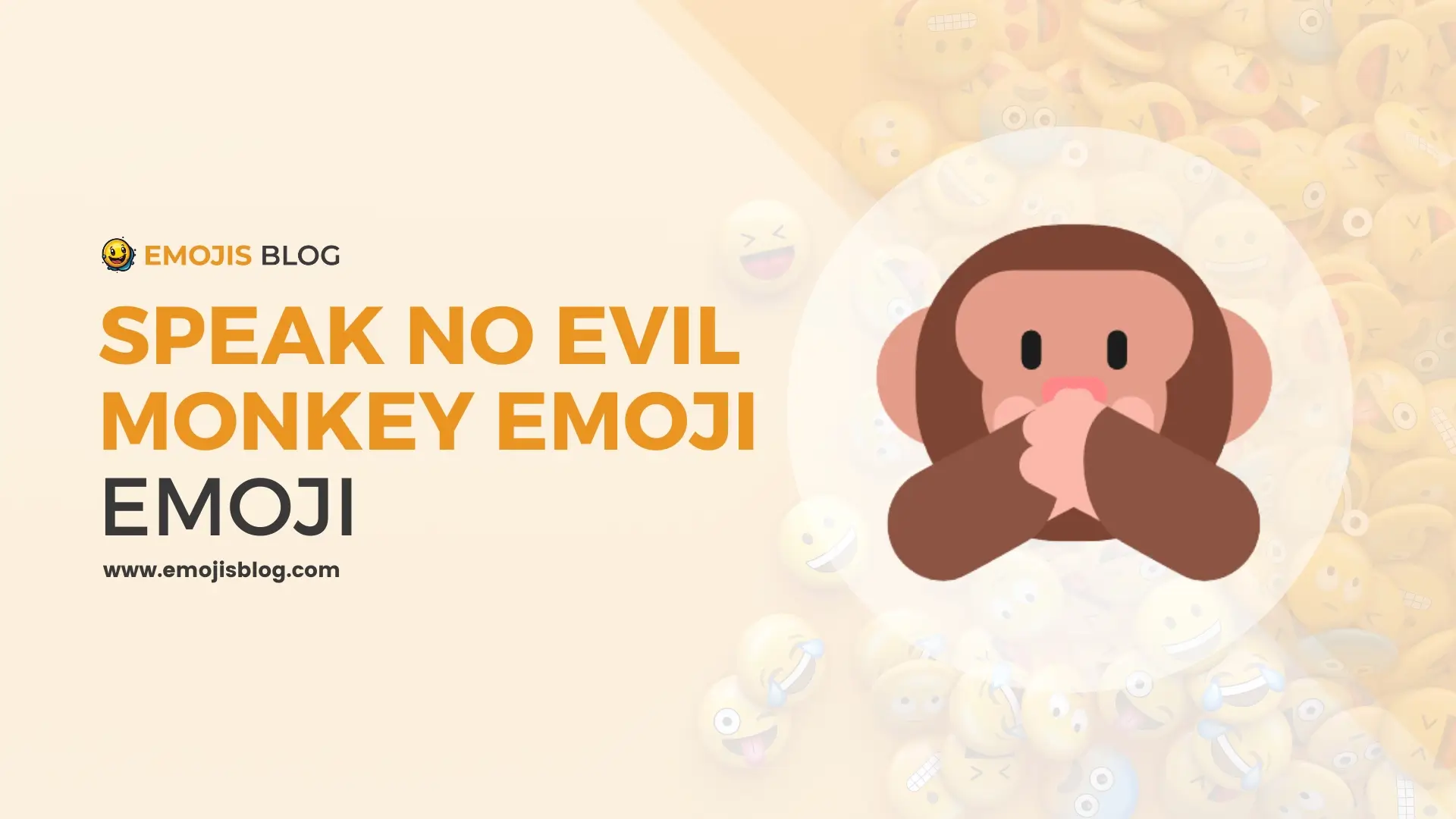What Does The Speak No Evil Monkey Emoji Mean 🙊
🙊
The Meanings Of Speak No Evil Monkey Emoji 🙊
The 🙊 Speak No Evil Monkey emoji depicts a monkey with its hands covering its mouth, derived from one of the three wise monkeys embodying the proverbial principle to “see no evil, hear no evil, speak no evil.” In digital communication, it transcends its original moral teaching, being used to express a range of emotions and actions from embarrassment, secrecy, playful naughtiness, to a commitment to refrain from negative speech. Its widespread use reflects its flexibility in conveying messages of discretion, humor, or self-restraint in a concise, visually engaging manner.
Technical Information
| Attribute | Information |
|---|---|
| Emoji | 🙊 Speak No Evil Monkey |
| Category | Animals & Nature |
| Subcategory | Animal-Mammal |
| Introduced In | Unicode 6.0 (2010) |
| Unicode Version | 6.0 |
| Codepoint | U+1F64A |
| Shortcode | :speak_no_evil: (varies by platform) |
| Keywords | Speak, no evil, monkey, silence, hush, secret, embarrassment |
| Skin Tones Supported | No |
| Variations | None |
| Popular Platforms | Apple, Google, Microsoft, Samsung, WhatsApp, Twitter, Facebook |
| Typical Usage | To convey silence, secrecy, embarrassment, or avoidance of negative speech in digital communication. |
Understanding the 🙊 Speak No Evil Monkey Emoji
The 🙊 Speak No Evil Monkey emoji is a digital icon that depicts a monkey covering its mouth with both hands, signifying the act of speaking no evil. This imagery is deeply rooted in a proverbial principle that is often represented by three monkeys, each covering a different part of their face: the eyes, ears, and mouth. These monkeys embody the proverbial principle to “see no evil, hear no evil, speak no evil.” The 🙊 emoji, specifically, focuses on the aspect of speaking no evil, and over time, it has evolved to convey a wide range of meanings and uses in digital communication.
Historical and Cultural Significance
The origin of the “see no evil, hear no evil, speak no evil” concept dates back to 17th century Japan, originating from the Tōshō-gū shrine in Nikkō, where a carving of the three monkeys, known as Mizaru (covering eyes), Kikazaru (covering ears), and Iwazaru (covering mouth), was displayed. This principle has been interpreted in various ways, often related to being of good mind, speech, and action.
In the context of digital communication, the 🙊 Speak No Evil Monkey emoji has taken on a life of its own, far removed from its historical and cultural origins. It serves as a versatile tool in conversations, embodying emotions, actions, and reactions that can range from humorous to serious.
Modern Interpretations and Uses
1. Embarrassment or Sheepishness
One common use of the 🙊 emoji is to convey a sense of embarrassment, sheepishness, or the desire to “speak no evil” about something potentially awkward or embarrassing. It can signify a playful admission of guilt or a way of saying, “Oops, I shouldn’t have said that.”
2. Secrecy or Keeping a Secret
The emoji is often used to indicate that someone is keeping a secret or choosing not to spill the beans about something. It can represent a promise to keep one’s lips sealed.
3. Humorous or Playful Context
In a more light-hearted context, the 🙊 emoji can add a humorous or playful tone to a message. It’s used when someone is jokingly saying something naughty or cheeky, without the intention of causing harm or offense.
4. Avoiding Negative or Harmful Speech
Reflecting its origins, the emoji can also be a reminder or a self-imposed censorship to avoid speaking negatively or spreading harmful information. It represents a conscious decision to promote positivity and refrain from engaging in destructive conversation.
Conclusion
The 🙊 Speak No Evil Monkey emoji is a rich and multifaceted symbol in digital communication, capable of conveying a wide range of emotions and actions. From its roots in a Japanese proverb to its modern use in texts and social media, this emoji serves as a powerful tool for expressing silence, secrecy, embarrassment, and a commitment to positive speech. Like all forms of communication, the context in which it is used greatly influences its interpretation, making it a versatile and enduring icon in the digital age.

